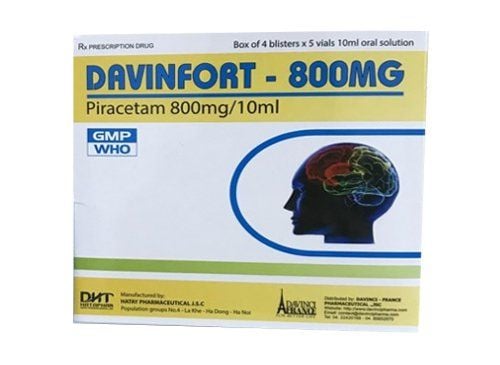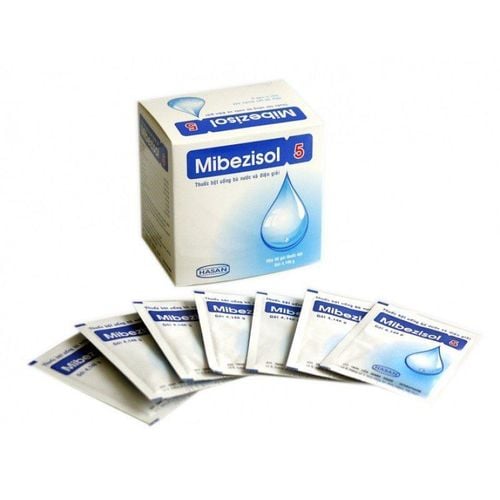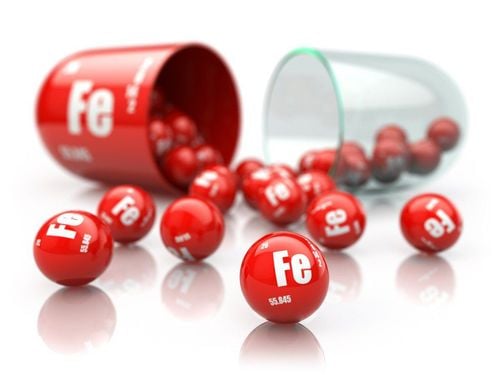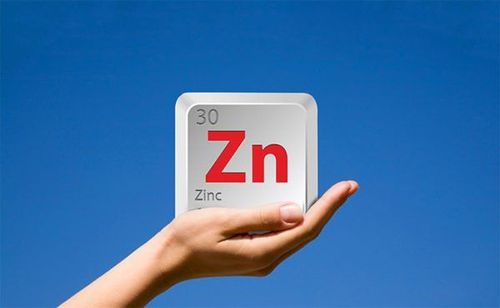This is an automatically translated article.
Article by Doctor Master, Doctor Tran Quynh Trang - Doctor of Biochemistry - Laboratory Department - Vinmec Times City International Hospital
Since it was first detected in an Iranian male in 1961, human zinc deficiency is known to be an important malnutrition problem worldwide. This condition is common in areas with high grain consumption and low animal feed consumption. Compared with adults, infants, children, adolescents, pregnant and lactating women have an increased need for zinc and, therefore, are at higher risk of zinc deficiency. Zinc deficiency during growth leads to growth retardation. The epidermal, digestive, central nervous, immune, skeletal, and reproductive systems are the organs most clinically affected by zinc deficiency.
1. The role of zinc in human health
The important role of zinc was demonstrated in 1869 for plants, in 1934 for laboratory animals and in 1961 for humans. A syndrome of anemia, hypogonadism, and dwarfism was reported in 1961 in the case of a 21-year-old Iranian farmer who was on a diet of flat bread, potatoes, and milk. Soon after, a similar syndrome was observed in Egyptian adolescents, whose dietary histories were similar to those of the Iranians, based mainly on bread and beans. Administration of zinc supplements or a diet rich in animal protein foods improved growth and corrected hypogonadism, while anemia responded to iron supplementation. Subsequent studies showed that this syndrome was mainly the result of a low dietary zinc intake. Since the discovery of zinc deficiency as a human health problem in 1961, interest in the biochemical and clinical aspects of zinc nutrition has increased markedly.
Although, the mechanisms of zinc-dependent metabolism for physiological functions have been extensively studied, clear relationships have not been fully established. The role of zinc in biology can be grouped into three major functional groups, namely catalytic function, structural function and regulatory function.
2. Zinc is absorbed in the body by what mechanism?
Zinc is absorbed in the small intestine by a carrier protein-mediated transport mechanism. The carrier protein that helps to transport zinc into the intestinal mucosa is called metallothionein, which is also synthesized by the mucous cells. This protein is also a stored zinc-binding protein in hepatocytes. The average absorption rate of zinc is about 40% - 50%. The type of carrier protein that binds to zinc in the blood is also transferrin, the carrier protein of iron.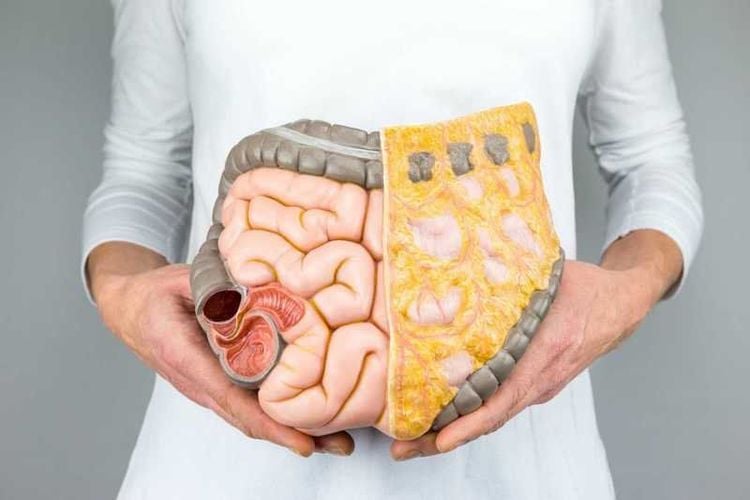
Zinc absorption is concentration dependent and increases as dietary zinc intake increases to maximum concentration. Zinc is released from food as a free ion during digestion. These ions can then bind to endogenous secretions before they are transported into enterocytes and jejunum. Approximately 70% of circulating zinc is bound to albumin, and any condition that alters serum albumin concentrations can have a secondary effect on serum zinc concentrations.
The role of Metallothionein, an intracellular metal-binding protein, in regulating zinc absorption remains unclear. Metallothionein synthesis in the liver and muscle is stimulated by dietary zinc supplementation, by intraperitoneal zinc injection, and by the acute and inflammatory response. Dietary restriction also leads to decreased metallothionein synthesis. Another transporter potentially involved in the absorption of zinc and other metals is the divalent cation transporter 1 (DCT 1), a transmembrane polypeptide found in the duodenum in the stroma and villi. lower capillaries and may be available to absorb some metal ions.
Maintaining a steady state of intracellular zinc, or homeostasis, is essential for survival. In animals and humans, regulation of total intestinal absorption and excretion of zinc is the primary means of maintaining zinc homeostasis.
Normally, the amount of zinc absorbed in humans ranges from 107 μmol/day to 231 μmol/day (equivalent to 14-30 mg/kg). Protein generally has a positive effect on zinc absorption, because zinc absorption tends to increase with protein absorption. Consuming animal proteins (e.g. beef, eggs and cheese) improves the bioavailability of zinc from food sources possibly because amino acids released from animal proteins keep zinc in solution or protein. associated with phytate.
3. The need to use zinc at each age
The need for zinc at each age is assessed as follows:
Compared with adults, infants, children, adolescents, pregnant and lactating women have an increased need for zinc. Exclusively breastfed infants of mothers who are supplemented with zinc will have enough zinc for the first 5-6 months of their life. After this age, it is necessary to add complementary foods containing easily absorbed zinc to meet the requirements of the child. The zinc requirement of malnourished children has been estimated to range from 2 mg/kg to 4 mg/kg body weight. These requirements are much higher than in healthy children (0.17 mg/kg at 1–3 years of age), presumably due to pre-existing zinc deficiency and reduced zinc absorption due to intestinal changes. Adolescents: Physiological requirements for zinc peak during adolescence at the time of the pubertal growth spurt, which typically occurs in girls 10 to 15 years of age and in boys 12 years of age. age to 15 years old. Even after growth stops, adolescents may need zinc supplements to replenish depleted tissue zinc levels. Pregnancy and breast-feeding: Increased nutritional requirements during pregnancy and lactation make women zinc deficient.
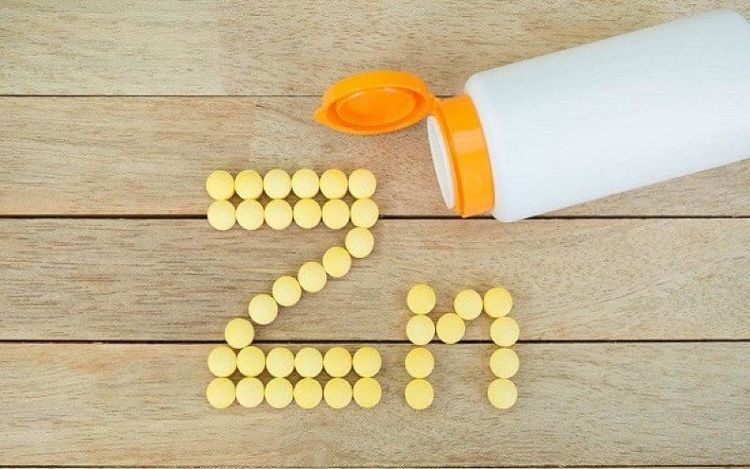
In some special cases, you can have a zinc blood test to assess your health status to give advice on the appropriate use of zinc.
Pathologically related features:
One of the most studied clinical features associated with zinc deficiency is impaired growth and physical development. Zinc helps increase physiological strength and maintain long-term reproductive health for men, is necessary for the composition of Testosterone and plays an important role in the synthesis, structure, and secretion of many hormones. other. Zinc helps increase sperm motility, reducing the risk of prostate cancer.
Risk of infection: Diarrhea, dermatitis, pneumonia...Infectious diseases and malnutrition are major causes of morbidity and mortality in children globally. Zinc deficiency also leads to impaired cognitive function, behavioral problems, memory impairment, learning loss, and neuronal atrophy. Skin problems become more frequent as children get older. Hair loss, growth retardation, and recurrent infections are common in school-age children. Chronic nonhealing skin sores and recurrent infections are common in the elderly. Blood or serum zinc concentration:
Plasma or serum zinc concentration is currently the best available biomarker of risk for zinc deficiency in the population. Serum zinc concentration according to BMI (according to the study of J Arnaud, M Touvier, P Galan, M Andriollo-Sanchez et al. 2010).
| BMI | Nam (μmol/L) | Nữ (μmol/L) |
| Bình thường ≤ 25 | 13,5 ± 0.04 | 12,8 ± 0,03 |
| Quá cân 25 ≤ 30 | 13,5 ± 0.04 | 13,0 ± 0.06 |
| Béo phì ≥ 30 | 13,5 ± 0.11 | 12,9 ± 0.10 |
Reference value: 10.71 – 18.36 μmol/L. This value may vary depending on the test method. The best way to determine if there is a zinc deficiency is to perform a zinc test at medical facilities to be checked by a doctor and for timely intervention.
If you have a need for consultation and examination at Vinmec Hospitals under the national health system, please book an appointment on the website (vinmec.com) for the best service.
Please dial HOTLINE for more information or register for an appointment HERE. Download MyVinmec app to make appointments faster and to manage your bookings easily.





